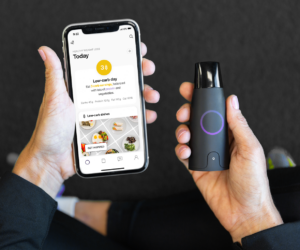Verve Therapeutics now has the formal FDA documentation specifying what the regulator wants to see before it allows the company to begin human testing of its gene-editing therapy for an inherited form of high cholesterol.
VERVE-101 is designed to turn off PCSK9, a gene that produces a liver protein that makes it more difficult for the body to clear low-density lipoprotein, the “bad” form of cholesterol. Patients have already been dosed in a clinical program underway in New Zealand and the U.K. Last month, the FDA placed a clinical hold on the Boston-based company’s new drug application for a U.S. trial.
The FDA wants to see more preclinical data regarding potency differences between human and non-human cells as well as additional data about the risks that the changes made by the therapy can be inherited by a patient’s children, Verve said in a Monday regulatory filing. The FDA asked that Verve modify the clinical trial protocol in the U.S. to incorporate additional contraceptive measures and to increase the length of time between the dosing of patients.
The FDA also has concerns about off-target effects. The filing states the agency asked the company to provide analyses of data showing whether the therapy’s effects reach cell types beyond liver cells. Furthermore, the FDA has asked to see the available data from New Zealand and U.K. so far. Those data were not part of the initial submission filed with the FDA. Verve said enrollment is continuing in those regions and the company plans to report initial safety and pharmacodynamic data from the dose-escalation part of the trial in the second half of 2023. Without specifying a timeline, the company said it plans to submit a response to the FDA’s information requests “as expeditiously as possible.”
The lifting of a clinical hold on another experimental genetic medicine was among the other recent regulatory news from the past week, which included two drug approvals and one rejection. Here’s a roundup of those developments:
—The FDA lifted a clinical hold on the investigational new drug application for a Beam Therapeutics gene-edited cell therapy for acute lymphoblastic leukemia. The FDA placed the hold on the program, BEAM-201, in August. With the hold lifted, the Cambridge, Massachusetts-based biotech is now cleared to proceed with tests in humans. BEAM-201 is an off-the-shelf cell therapy that employs four edits made with base-editing technology. Beam said it will provide details for the program’s next steps in 2023.
—The FDA has approved the first fecal microbiota treatment for preventing the recurrence of Clostridioides difficile (C. diff) infection in adults. The regulatory decision covers those who have finished a course of antibiotics for the potentially deadly infection. The Ferring Pharmaceuticals product, named Rebyota, is made from stool provided by qualified donors. This rectally administered live biotherapeutic is intended to restore the gut microbiome, which in turn prevents episodes of C. diff infection.
—A Rigel Pharmaceuticals drug won FDA approval for treating acute myeloid leukemia (AML) with a particular genetic signature. The South San Francisco-based biotech will commercialize the drug, olutasidenib, under the name Rezlidhia. The small molecule is designed to target mutated isocitrate dehydrogenase-1 (IDH1), an enzyme found in cancerous cells. Blocking this enzyme is intended to restore normal differentiation of myeloid cells. The regulatory decision for Rezlidhia covers the treatment of adults whose AML has the IDH1 mutation as detected by an FDA-approved test.
—The FDA turned down Y-mAbs Therapeutics application seeking approval for its drug to treat a rare pediatric brain cancer. The drug, omburtamab, was developed to address leptomeningeal metastases, which is the spread of neuroblastoma from the brain to the membranes surrounding the brain and spinal cord. The negative regulatory decision came a little more than a month after an independent advisory committee to the FDA voted unanimously that New York-based Y-mAbs had not provided enough evidence to show that the clinical program, which compared omburtamab to a historical control group, improved overall survival in patients.
—Eli Lilly’s Covid-19 drug bebtelovimab is no longer authorized for use anywhere in the U.S. According to the FDA, the change was made because the antibody is not expected to work against the omicron subvariants BQ.1 and BQ.1.1., which together account for 57% of all cases nationally. Revocation of the Lilly drug’s emergency use authorization removes from the market the last remaining monoclonal antibody drug for Covid-19.
Photo: Sarah Silbiger, Getty Images
About two weeks ago, California Nurses Association reached a tentative agreement with Kaiser Permanente, averting what would have been the biggest private sector nurses strike in American history. On Monday, the union announced that its nurses voted to ratify a new four-year contract — one that includes provisions for a significant wage increase, improved staffing and more.
California Nurses Association represents about 22,000 nurses at 22 Kaiser facilities.
The averted strike would have involved about 21,000 nurses and nurse practitioners at 21 Kaiser Permanente facilities in Northern California. These nurses had been in negotiations since June. The strike would have also involved about 1,000 nurses at Kaiser’s medical center in Los Angeles. They joined their Northern California nurse colleagues in September.
The new contract’s provisions to retain experienced nurses and hire new ones is expected to provide much-needed relief for nurses amid staffing shortages, according to Cathy Kennedy, who is the president of the California Nurses Association and a nurse in the neonatal intensive care unit at Kaiser’s medical center in Roseville.
“We are so happy that this contract adds more than 2,000 positions across our Northern California facilities,” she said in a statement sent to MedCity News. “That is amazing and will improve staffing greatly.”
In an interview last month, Kennedy called the contract a “huge win” for Kaiser’s nurses.
Under the contract, Kaiser is increasing wages for its Northern California nurses by 22.5% over four years. This wage growth “is driven by the changing economy, including inflation, significant changes in the marketplace and our commitment to providing our employees with excellent pay and benefits to attract and retain the best nurses,” according to the health system.
Kaiser also agreed to increase tuition reimbursement for nurses’ continuing education, maintain a three-month stockpile of personal protective equipment, and scale workplace violence prevention plans to all facilities.
The contract’s patient-first language and provisions for equity are significant as well.
The ratified contract asserts that healthcare is a human right, Kennedy pointed out. It also states that the U.S. healthcare system must eliminate racial and ethnic disparities in patient outcomes, promote culturally competent care delivery, and expand the diversity of its workforce.
Kaiser has promised to create a new regional committee for equity, diversity and inclusion at each facility. These committees will be composed of two nurses from each facility, and they will “bring nurses to the table” to address systematic racism within the healthcare system, Kennedy explained.
When the new contract was put on the table last week, Kaiser said it was “proud of the work our nurses do and we are making sure Kaiser Permanente continues to be the best place to work for our valued nurses.”
Nurses at Kaiser’s Los Angeles medical center ratified a new contract on November 22. For the Northern California nurses, voting began on November 22 and concluded on December 2.
The contract’s ratification comes about six weeks after another swath of Kaiser’s Northern California employees approved a four-year contract of their own — that time, it was about 1,600 mental health workers. Their approval followed a 10-week strike.
Picture: rvolkan, Getty Images
As the world enters a possible recession and healthcare costs rise, affordability will be a key concern for employers in 2023, according to the Business Group on Health. Other top health trends for employers next year will be continued support of wellbeing programs and health equity.
“None of these are new issues, but they’re magnified and a bit nuanced in light of current events and where the macroeconomic environment is,” Ellen Kelsay, president and CEO of Business Group on Health, said in an interview. “That’s why we’ve really pulled them forward as things that we’re keeping a sharp eye on as we head into 2023.”
The Business Group on Health is a nonprofit organization that represents large employers on health and benefits policy.
Here are the top three trends the organization is watching for employers in 2023:
Healthcare costs
Employers will likely see higher healthcare costs in 2023, partially due to an increase in demand for care after people put off services during the beginning of the pandemic. A recent Business Group on Health survey of 135 large employers found that 43% have already seen a rise in medical services because of delayed care from Covid-19, and another 39% expect to in the future.
Additionally, cancer is now the top condition driving healthcare costs, surpassing musculoskeletal conditions, another Business Group on Health Survey found. This is because cancers are now being identified at later stages.
“During the pandemic, there were a lot of preventive visits and cancer screenings that didn’t occur,” Kelsay said. “So there’s a backlog of services that now people are going to get treated for and we might see some more late stage cancers being diagnosed, which are going to be more expensive and challenging to treat.”
In response, many employers are absorbing the increases in healthcare costs, rather than putting the burden on employees, Kelsay said. They’re also moving away from fee-for-service payment models to more value-based arrangements, and looking at their vendors to see if they have any duplication of services.
More focus on health and wellbeing programs
Despite this increase in healthcare costs, the Business Group on Health doesn’t anticipate health and wellbeing programs going away for employees, Kelsay said. In fact, 65% view health and wellbeing as an integral role in their workforce strategy, up from 27% five years ago, the nonprofit found.
“We’ve had some folks say, ‘Well, gosh, maybe in a time of uncertain economic situations, employers might start to retract some of those efforts,’” Kelsay said. “We don’t see that happening at all. In fact, for a number of years when we’ve surveyed our employer members, they take a long-term view of their health and wellbeing offerings and really view them as … part of a strategic component of their overall workforce strategy.”
To continue offering these wellbeing programs, employers will be searching for partnerships that can provide high quality solutions and improve patient outcomes, Kelsay said. Many employers are focusing on programs for mental health, financial wellbeing and caregiver support, she added.
Efforts to battle health inequities
There are several key areas employers are looking to reduce health inequities within their organization, though it depends on the company. These areas include housing, food, maternal health, transgender care and care for neurodiverse populations, Kelsay said. Some employers are also looking to help workers living in rural communities.
“Different employers and different workforces might have different areas of inequity that they might be addressing,” Kelsay said. “But they’re very keen to make sure that all of their employees of any type of population or however they might identify have equal access to health and wellbeing services to treat their particular needs.”
Getty images, utah778
Health information exchanges (HIEs) ensure the secure mobilization of electronic health information across organizations within a region. Each state in the country has an HIE, and some even have more than one.
HIEs, which can be public or private, are meant to enable more effective care that better meets patients’ unique needs. They have been around for a couple decades, but results are mixed when it comes to their success. The next generation of HIEs must think beyond the transfer of information and explore how they can use real-time health data to improve population health outcomes, according to Jamie Bland, the president and CEO of CyncHealth.
CyncHealth is Nebraska’s designated statewide HIE and prescription monitoring program. The nonprofit became a statewide HIE in 2012, Bland said in an interview.
“If you think about how people access healthcare, as well as the differences in electronic health records and how they have evolved over the past 20 years, what we’re really trying to do is connect data to the person,” she declared.
With CyncHealth, a person’s health information follows them throughout their healthcare journey. When it’s appropriate for a provider to seek their information (perhaps for treatment or a check-in), their data is available as a health history. CyncHealth also provides citizens with their longitudinal health information, according to Bland.
“Having data follow the person is important for patient safety outcomes, care coordination and just really looking at population health overall,” she said.
A key way that CyncHealth is seeking to improve population health outcomes is through a program it launched six months ago in Omaha to improve health and equity in maternal and postpartum care. Under the program, CyncHealth coordinates a secure data exchange amongst key healthcare stakeholders such as Medicaid, hospitals, clinics, federally qualified health centers, primary care providers, OB-GYNs and substance use disorder clinics.
The program is designed to identify mothers and infants who are in need of care. The pilot identifies high-risk patients based on a wide variety of factors — including race, ethnicity, ZIP code and medical history — and it contacts providers so they can design a holistic care plan for their high-risk patients.
CyncHealth’s program for maternal and postpartum care also keeps providers informed about their patients’ real-time health data. For instance, let’s say a pregnant woman goes to the emergency department because she feels dizzy and is then diagnosed with high blood pressure. CyncHealth would notify all her treating providers to ensure they perform appropriate follow-up care. Interventions like these are important, as hypertension is a huge factor that contributes to maternal morbidity.
“This is a newer program, so we don’t have longitudinal data just yet. But what we hope to see in the data is that [adverse] outcomes — whether they be postpartum complications, or issues that could lead to death like in a pulmonary embolism or hemorrhaging after childbirth — can can be followed up on more rapidly than without this type of information exchange,” Bland said.
CyncHealth plans to keep this program running in the future, according to Bland. To measure its impact, she said the nonprofit will track how many notifications it sends to providers and how many were acted upon. CyncHealth will also look at how maternal mortality and morbidity data changes over time in Omaha.
This summer, HHS recognized CyncHealth’s Omaha program as one of the top 25 winners of Phase I of its health equity-focused postpartum care challenge.
“That recognition is really just underscoring the work that we’ve done to build a broad health information network,” Bland said. “When you have that foundation, you can really start to improve population health because it takes a data exchange to be able to react more quickly to information.”
Photo: FatCamera, Getty Images
While few employers provide retiree health benefits, the ones that do are using Medicare Advantage plans more and more, a new analysis found.
Currently, only 13% of large employers — or companies with 200 or more employees — offer retiree health benefits, the Kaiser Family Foundation (KFF) report showed. Of this group, 50% provide these benefits through a Medicare Advantage plan, up from 26% in 2017.
For firms with 5,000 or more workers providing retiree benefits, 60% use Medicare Advantage plans, up from 29% in 2017.
Additionally, of the large firms providing retiree benefits with a Medicare Advantage plan, 44% don’t offer any other choice for coverage, the survey discovered.
The KFF report relied on data from the 2022 KFF Employer Health Benefits Survey. KFF worked with NORC at the University of Chicago and Davis Research to conduct the survey, which included interviews with business owners and human resource and benefits managers at 2,188 firms.
A major reason for firms turning to Medicare Advantage plans for retirees is financial. About 27% of all large firms chose these plans due to cost; 20% of firms with 200 to 999 workers and 42% of firms with 1,000 or more workers selected cost as the top factor driving their decisions. Other reasons cited for choosing MA plans were their administrative simplicity, better coverage options and flexibility for enrollees.
This shift could have several effects on retirees, KFF said.
“As the share of large employers offering retiree health benefits to Medicare-eligible retirees continues to decline, firms that still offer these benefits are increasingly turning to Medicare Advantage, often to lower their own financial liability, which raises questions about the implications for retirees, employers and the Medicare program,” KFF stated in the report. “For some large employers, the shift to Medicare Advantage appears to be a strategy to maintain benefits for their retirees, without terminating coverage or adopting other changes that more directly shift costs onto retirees.”
One of these implications is the impact this approach could have on retirees’ access to physicians and hospitals, the report said. They’ll also have to go through prior authorization, which could limit their access to some services. If they’re not happy with their network, they would have to completely give up their retiree benefits, KFF said.
Another implication is the impact on Medicare spending, as Medicare pays more for enrollees in Medicare Advantage plans than traditional Medicare, according to KFF.
The report comes as Medicare Advantage enrollment in general is becoming more popular. A separate KFF report found that about 48% of Medicare beneficiaries are enrolled in Medicare Advantage plans. This number could cross the 50% threshold as soon as next year.
At the same time, there is a growing desire to scrutinize MA plans given that some believe they are misleading for seniors and actually drive up costs for the Centers for Medicare and Medicaid Services. CMS recently released a requirement — effective January 1 — that bans MA plans from advertising on television without approval from the agency.
Photo: designer491, Getty Images
I don’t think anyone can really be prepared for their first time using a virtual reality headset. Technology has become such a familiarized part of our lives that I think its brilliance can sometimes be lost on us, but virtual reality has given people a taste of something they’ve never experienced before. Virtual reality isn’t a technology that simply complements our lives, it’s a technology that brings our lives into an entirely new reality.
It’s no wonder that virtual reality’s impact has been far-reaching. You can be transported to any corner of the world and feel like you’re really there. You can purchase movie tickets and watch a film in a VR cinema with your friends. And of course, you can play a huge variety of video games that make you feel like you’re part of the action.
So, what does this have to do with healthcare? While virtual reality applications don’t seem like they’d have much use in the healthcare industry, VR has proven to be a valuable tool in treatment and care. Medical teams have used virtual reality to plan out and practice complex surgeries, like a neurosurgical procedure, ahead of time. It’s been used as a pain management tactic to distract patients from scary or painful procedures, especially in instances where sedation and anesthesia can’t be given. It’s also helped professionals working in addiction recovery be more creative in the strategies and techniques they use to help their patients overcome their addictions. But another remarkable way virtual reality is applied in the healthcare industry is as a training tool.
Thanks to VR, facilities are able to create simulations for a number of different scenarios that employees can experience from a first-person perspective. Here’s how this is revolutionizing healthcare training.
A deeply immersive and interactive education
Medical professionals know that healthcare is a high-stakes industry, so they’re thankful for all the stages of training they go through to adequately prepare themselves for their future roles. Extensive classroom training, training in the field, and being mentored by seasoned medical professionals is all significant, but being on your own for the first time can be intimidating.
Virtual reality gives new doctors, nurses, and medical staff the ability to immerse themselves in real-life scenarios as if they were in charge. They can see the immediate consequences of their actions and can learn from their correct or incorrect behaviors. They can be exposed to dangerous or life-threatening situations and practice resolving each scenario without putting themselves or their patients in any real danger.
Facilities are always researching and developing new ways to enhance their training processes, and what better way to do that than to have new staff members immerse themselves in situations they could experience while on the job? This is how facilities can enforce self-awareness in their employees while creating more confident, capable teams. Studies have shown that experiential learning also drives higher compassion for patients as well. This is much harder to accomplish with more traditional training methods where employees can’t get regular, hands-on practice.
Virtual reality-based training has been proven to improve performance across the healthcare industry while reducing the possibility of fatal errors. Nothing prepares someone for the real thing more effectively than a program built to replicate real-world experiences.
New or updated equipment training
In order to continue providing the best care to patients, medical equipment must constantly be updated or replaced with new devices. With any new feature, there’s always a learning curve — except in healthcare, these learning curves can have dire consequences.
Training new employees on new or updated equipment can be extremely time-consuming, and facilitating times to introduce staff members to the equipment can be a headache. Virtual reality not only makes equipment training faster and more accessible, it also gives everyone an opportunity to practice using the equipment, tools, and technology as much as they need to in order to feel more comfortable before using it for the first time.
Higher staff retention
Since the beginning of the pandemic, the healthcare industry has seen an increase in staff turnover across hospitals, skilled nursing facilities, and other medical offices. As executives find ways to entice their employees to stay, it seems like some of the common incentives, like higher pay and bonuses, are no longer good enough to combat record levels of burnout and fatigue.
In addition to their wellbeing, doctors, nurses, and other medical staff are also choosing to leave their jobs due to a lack of personal growth and poor self-confidence — both of which put patients at a greater risk of danger. Facilities must invest in the ongoing education and training of their teams, which will help staff members develop greater confidence and competence. Virtual reality exceeds the traditional training methods facilities often use, and this new immersive, experiential way to train staff members is critical for their proficiency and satisfaction. VR simulators have been shown to boost procedural confidence and develop technical on-the-job skills. Investing in your employees means investing in advanced technology that will allow them to perform better in their roles.
Virtual reality helps to build confident, collaborative teams that then create a positive workplace environment for other staff members and patients alike. Using tools like virtual reality to train the current and next generations of healthcare workers is another way executives can commit to enhancing the industry as a whole.
Photo: Moyo Studio, Getty Images
An Amgen drug that employs two different mechanisms to lead to weight loss has early-stage clinical data showing durable effects, laying the groundwork for a Phase 2 test as the pharmaceutical giant continues to chase rival obesity drugs from Novo Nordisk and Eli Lilly.
Patients in the Phase 1 study were randomly assigned to receive the experimental Amgen drug, code-named AMG 133, or a placebo, either as a single dose or multiple ascending doses given as a subcutaneous injection every four weeks. Those participants were obese but did not have other medical conditions, including diabetes.
In the 26 patients who received multiple ascending doses, Amgen reported that the drug led to an average of 7.2% weight loss at the lowest dose and an average 15.5% weight loss at the highest dose by day 85. The company added that the weight loss was maintained at the highest doses for up to 150 days following the third and final administration of the drug. Data from three of the six multiple dose-ascending cohorts were reported. The other three were not included due to data analysis that is still ongoing, Amgen said in an investor presentation Monday.
Amgen presented the preliminary data over the weekend during the 20th World Congress of Insulin Resistance, Diabetes and Cardiovascular Disease Hybrid Conference. With the encouraging results, the Thousand Oaks, California-based pharmaceutical giant said Monday that it plans to start a Phase 2 study in early 2023.
AMG 133 is an antibody-peptide conjugate designed with one part that activates a target called GLP-1 and the other that blocks a different target called GIPR. In preclinical research, Amgen reported this dual approach led to weight loss as well as improvement in other metabolic measures.
“AMG 133 was designed based on preclinical and human genetic data that strongly suggest GIPR inhibition as a strategy for weight loss, especially in combination with GLP-1 agonism,” David Resse, Amgen’s executive vice president of research and development said in a prepared statement. “We are encouraged by these Phase 1 results with once-monthly dosing of AMG 133, specifically, the degree, rate and durability of the weight loss.”
In the Phase 1 study, the most common side effects reported were nausea and vomiting. Amgen characterized these side effects as mild and transient. These problems were associated with the first dose and most of them resolved within 48 hours, the company said.
With AMG 133, Amgen is chasing Novo Nordisk’s semaglutide, a GLP-1-activating drug that won its first FDA approval in 2017 for treating type 2 diabetes. The once-weekly injectable molecule is marketed as Ozempic in that indication. Last year, the FDA approved semaglutide for chronic weight management, where the drug is marketed as Wegovy. In the four 68-week pivotal studies supporting Wegovy’s regulatory submission, treatment led to an average 12.4% weight loss.
Eli Lilly is also looking to add weight loss to the label of its drug, Mounjaro, which was approved earlier this year for treating type 2 diabetes. Mounjaro is a peptide drug designed to activate both GIP and GLP-1. Clinical research in type 2 diabetes showed that the drug also led to weight loss. In its report of third quarter financial results last month, Lilly said it planned to initiate a rolling submission for the drug in obesity this year, completing the application soon after the second of two Phase 3 tests has data, which are expected in April 2023.
Comparing weight loss data across clinical trials is tricky, as these drugs were not tested head to head. But despite trailing the regulatory progress its rivals, Amgen hopes AMG 133’s once-a-month dosing provides patient convenience and a competitive edge versus the once-weekly dosing of Wegovy and Mounjaro.
In a Monday research note, William Blair analyst Matt Phipps wrote that weight reductions of around 15% after three doses of AMG 133 compares favorably with the Phase 3 results posted by the Novo Nordisk and Lilly drugs at 12 weeks, with the caveat that Amgen’s results are from a smaller group of patients. Nevertheless, Phipps characterized the rate and magnitude of body weight reductions as “impressive.” He added that the pharmacokinetic and pharmacodynamic data support less frequent dosing than other drugs in the class with the potential to go beyond every four week dosing in a maintenance setting.
However, Phipps said the lack of biomarker data leave many questions about the role of blocking GIPR versus activating it the way that Lilly’s drug does. William Blair has previously noted the potential for GIPR antagonism to affect bone mineral density and bone strength.
Photo: Patrick T. Fallon/Bloomberg, via Getty Images
As nurses battle burnout amid a major workforce shortage, a new partnership aims to provide relief. The United Health Foundation (UNF) — the philanthropic arm of UnitedHealth Group — and the American Nurses Foundation (ANF) have teamed up to launch the three-year, $3.1 million Stress & Burnout Prevention Pilot program.
The program aims to improve work environments for nurses and remove the stigma associated with asking for mental health care. The curriculum will focus on ways to identify and reduce stress before it escalates. It will also help nurses learn how to talk about their stress and burnout and support their colleagues. While it will help all nurses, the program is especially geared toward nurses of color and those under the age of 35.
“Research and data have shown that these groups have been particularly negatively impacted by the pandemic both emotionally and mentally,” an ANF spokesperson wrote in an email. “It is important that we listen to the insights and experiences of these nurses, and make them feel heard and supported.”
For the program, UHF and ANF are working with four health systems: BayCare Health System in Tampa Bay, Florida; Indiana University Health in sites across the state; University of South Alabama Health Hospital in Mobile, Alabama; and Wayne Health Care in Newark, New York. These organizations will work to train 16 nurses, who will then implement the pilot with about 640 nurses. Findings from the program will then be incorporated into a national awareness and education campaign.
“Establishing a multi-site pilot will enable us to conduct programming and establish evaluation metrics that will assess more deeply the cultural change over time,” the ANF spokesperson said. “Over three years, the content will go through an iterative evolution, drawing from learnings and real experiences gathered from the pilot sites to inform the national initiative – feasibility and reach. If successful, the impact will be measured uniformly across all pilot sites and will be replicable at a national level.”
The initiative aims to tackle issues discovered by the ANF in its recent Pulse on the Nation’s Nurses Survey. It found that 71% reported feeling stressed, 69% said they’re frustrated, 65% said they’re exhausted, 49% said they’re burnt out and 58% said they’re overwhelmed.
A separate survey conducted by the ANF found that 34% of nurses do not feel emotionally healthy and 42% are experiencing trauma from the Covid-19 pandemic.
“Few could have predicted how unprecedented and demanding the past two and a half years have been for all of us, let alone our country’s nursing staff,” said Mary Jo Jerde, RN and senior vice president of the UnitedHealth Group Center for Clinician Advancement, in a news release. “Nurses have played a vital role throughout this critical period and we’re committed to ensuring they have the resources they need to deliver care across the country.”
Photo: gpointstudio, Getty Images
Users breathe into the Lumen device in order to get a reading on their metabolism. Based on the results, the connected app will give users a recommendation to follow a low-carb diet that day, a high-carb diet or somewhere in-between.
Wellness and fitness company Lumen announced Thursday that it aims to bring its metabolism tracking platform to more consumers in the U.S. and globally after raking in $62 million in Series B funding.
The Tel Aviv, Israel-based startup was founded in 2014 by twin sisters Michal and Merav Mor when they were training for the Ironman, a triathlon consisting of swimming, biking and running. They created a peer-reviewed handheld device that measures users’ metabolism through breath and connects to an app that helps track goals and provides nutrition coaching. The product is sold directly to consumers through the company’s website.
“Lumen understands the impact of each person’s nutrition, exercise, sleep, and stress on their metabolism by simply breathing into the device,” Michal Mor, co-founder and head of science for product for Lumen, wrote in an email. “Up until now, this was a process that was only available in hospitals or clinics and consisted of a 45-minute lab test.”
Users breath into the device each morning, which measures CO2 to determine the body’s source for energy that day: fats or carbs. It gives a score from one to five, with one meaning the user is almost entirely burning fat and five meaning the user is almost entirely burning carbs. Lumen will then give a recommendation for the user’s food intake, which could be a low-carb day, a high-carb day or somewhere in between.
The $62 million funding round was led by Pitango Venture Capital, and included participation from Hanwha Group and Resolute Ventures. In total, the wellness company has raised $77 million.
With the financing, Lumen hopes to reach more consumers, expand its personalized nutrition and lifestyle coaching services and gain more research partnerships with academic institutions. In the past year, the company has conducted several studies with universities, including Purdue University’s Whistler Center for Carbohydrate Research, University of Toronto’s Faculty of Kinesiology and Physical Education and ARU Cambridge, Mor said.
Additionally, an October study done with Tel Aviv Sourasky Medical Center found that 12-week prediabetic Lumen users lowered their Hb1c levels, and achieved an average weight loss of 13 pounds and a 3% body fat reduction.
Lumen offers three pricing options for its product: $249 for six months, $399 for 12 months or $699 for 12 months with personalized support from nutritionists. The device is not currently FDA approved, as it is not a medical device for diagnosing or treating conditions. However, the company hopes to provide services in the future for several medical conditions and illnesses, for which it will seek FDA approval, according to its website.
There’s a need for the company’s services. The metabolic health crisis is responsible for $464 billion in annual healthcare costs and affects eight out of 10 American adults, according to ScienceDaily.
“Our goal has always been to make metabolism measurement accessible to global communities because it’s the starting point to unlock your health and prevent major illnesses,” Mor said. “Lumen’s tracker helps users to improve their metabolic health, by optimizing nutrition, sleep, fitness regimes and more. Taking specific health conditions into account, like menopause and diabetes, helps us target our prime metabolic health.”
Lumen is the only company measuring metabolism through breath with a handheld device, Mor declared. However, for people diagnosed with a metabolic disease like diabetes, companies such as Dexcom, Medtronic and Abbott offer continuous glucose monitoring devices available by prescription.
Photo: Lumen
Health system leaders believe that improving patient access should be their top priority when strategically planning for 2023, according to a new report from the KLAS Research and UPMC’s Center for Connected Medicine.
For the report, KLAS and the Center for Connected Medicine surveyed 61 leaders from 59 U.S. health systems. These leaders included C-level executives, vice presidents, managers and directors. A full 35% of the health systems included in the report had more than 1,000 beds — 27% had 501–1,000 beds, 27% had 1–500 beds and 11% were clinics or ambulatory organizations.
To improve patient access, respondents agreed that their health systems will need to make changes in three key areas — people, process and technology.
PeopleMost health systems have designated a specific person to oversee their patient access strategy, according to the report. This person is usually an executive who also has responsibility for other areas of the organization, but a handful of health systems included in the report said they have a dedicated leader just for patient access.
“Patient access always has technical aspects, but organizations really need a high-level person who acts as the strategic owner and elevates the issue,” said a chief medical information officer interviewed in the report. “They can help manage the differences across the organization when it comes to governance and technology. It isn’t always very apparent who that leader should be.” (KLAS did not identify the executives interviewed for its report.)
Respondents brought up other people-focused factors that health systems are struggling with when it comes to patient access. Some leaders said they are unsure how their organization can get patients to be engaged in their own care.
Some leaders also identified difficulty getting the board to buy into organization changes, such as implementing new technology. This change management obstacle is a bigger challenge for larger organizations due to the complexity of the enterprise and various different processes and stakeholders, according to the report.
“The people-related factors are very difficult,” the same chief medical information officer said. “That includes individual departments or even CMIOs wanting to hold on to products we used previously. We might have new people come in with their own points of view on what should happen around patient access technologies. Our organization needs to be able to reach a consensus, or we end up with a chaotic technology environment.”
ProcessThe healthcare industry’s lack of process standardization — regarding everything from appointment scheduling to data storage to payment — is a crucial problem that negatively impacts patient access, according to the report.
One health system CEO interviewed in the report said it was “maddening” to try and standardize these processes, because they vary between each practice and hospital.
“Our organization used to be one hospital, but now we have more than 15 hospitals,” the CEO said. “We have just not been able to get all those people on the same processes so we can actually realize efficiencies of scale.“
When hospitals adopt new technology to improve patient access (such as telehealth, self-scheduling, remote patient monitoring and price transparency technology), it is only fruitful if patients and staff understand the process of how to use the technology. Unsure of how to educate patients and staff quickly, providers often turn to vendors to help guide effective processes for new technology, the report said.
TechnologyThe technologies that have been implemented the most by health systems to strengthen patient access are patient portals, appointment reminders and telehealth, the report showed.
Most health systems use patient portals. Since their initial rollout, patient portals have evolved from just repositories of test results to avenues for greater engagement. Now, patients can use portals to message their provider, schedule appointments and request prescription refills.
Appointment reminder solutions are also used by most health systems. These messages have been proven to reduce patient no-shows, and they free up staff since they’re automated.
Telehealth took off during the pandemic out of necessity. Now that things have calmed down a bit, hospitals are definitely seeing less telehealth utilization, but the modality still remains an important tool to advance patient access. This is true especially in the area of behavioral health, where telehealth usage continues to rise.
Photo: megaflopp, Getty Images










